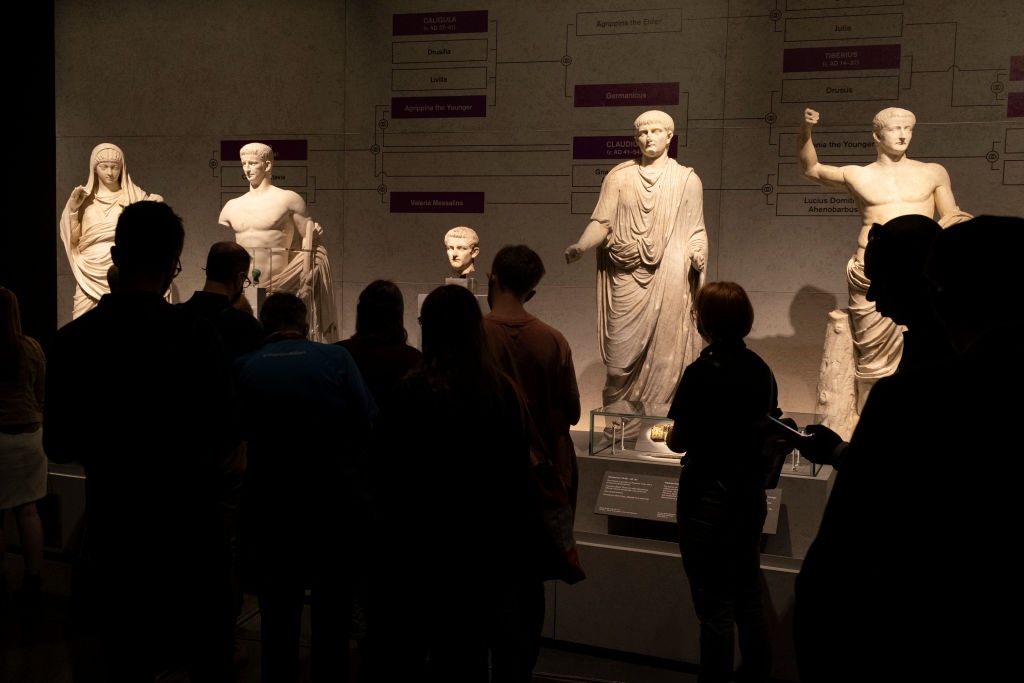The Boris cult lives on
What his new portrait says about him
Every portrait tells a lie, but every good portrait should also reveal something of the true character of its sitter. It’s perhaps appropriate that a new painting of Boris Johnson, unveiled this week at the Carlton Club, does plenty of the former.
The artist, Richard Stone, has given us Boris the statesman, with a direct gaze, a defensive but firm posture and a low perspective that’s meant to make the viewer feel like they’re looking up. He’s done the dishevelled hair and can’t-be-arsed collar, but generously shaved a few stone off the former Prime Minister’s physique. From photographs (I’m not a member of the Carlton Club) it looks like the canvas has been left slightly unfinished at the bottom, which, if so, is surely a reference to Graham Sutherland’s lost portrait of Churchill.
Plenty of Henry V, but none of the Falstaff
It’s certainly more successful than the rather stiff portraits of Elizabeth II for which Stone is best known (although as I have argued on these pages before, the late Queen was an impossible subject). It’s also stronger than Stone’s portraits of other Conservative leaders. His portrait of Michael Howard, which also hangs in the Carlton Club, has a warmth and charm the man himself lacked, and Maragaret Thatcher obsessives are sure to enjoy the imposing and subtly flirtatious Downing Street portrait, but no one can seriously claim it’s a great painting.
Stone also compares favourably with other artists who have painted Prime Ministers. Alastair Adams captured Tony Blair’s messianic stare in his painting for the National Portrait Gallery, but the result is frankly unsettling. John Wonnacott’s portrait of John and Norma Major looks like flattened potpourri.
So a good effort, but I can’t be alone in wishing for this Shakespeare devotee to have been painted in a more Elizabethan manner — a few skulls for heavy-handed Covid symbolism perhaps and, of course, an impressive codpiece. Instead we have a painting that’s modern and aesthetically effective, but nothing like the cartoonish Boris. Plenty of Henry V, but none of the Falstaff.
Because readers won’t need reminding that as well as vanquishing Jeremy Corbyn, vaccinating the country against Covid and giving invaluable support to Ukraine, Johnson was an ignominious failure as Prime Minister. His downfall was a consequence of being both too slippery and unreliable, and too steadfastly loyal to the wrong people. In other words it’s his complex and contradictory personality, as well his wit and turn of phrase, that has leant his career its Shakespearean character.
There is a deathless Boris cult in the Conservative Party
Why then, does this painting make him appear so one-sided? The obvious answer is that it is not intended for a critical audience. There is a deathless Boris cult in the Conservative Party, and I wouldn’t be surprised if it corresponded neatly with the membership of the Carlton Club (which, to reiterate, does not include me). It’s no coincidence that this venue was the setting for the events that ultimately precipitated Johnson’s resignation. These people believe, like delusional socialists, that true Johnsonianism has never been tried.
This painting is telling them the story they want to hear. It doesn’t look like a man who’s reached the end of his career with no more lands to conquer — he looks lean, hungry and resolved to do more. This will no doubt give succour to the likes of the Conservative Democratic Organisation who are campaigning to empower Tory members in the hopes they will facilitate a return of their hero.
But it is a comforting lie. There is little evidence that Tory members actually want to see Boris return, in fact, as Paul Goodman of ConservativeHome says, quite the contrary. Let’s not forget that it was Tory members who thought Liz Truss would be a good idea. They have better taste in art than they do in Prime Ministers — and they don’t have very good taste in art.
If this portrait does hint at a return of Boris Johnson, let’s hope it’s just a painterly sleight-of-hand.
Enjoying The Critic online? It's even better in print
Try five issues of Britain’s most civilised magazine for £10
Subscribe














